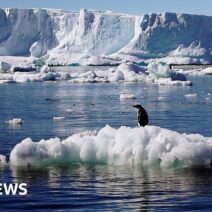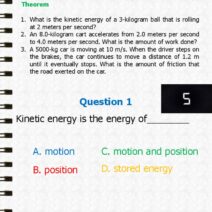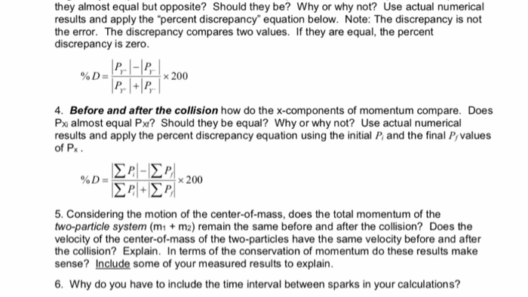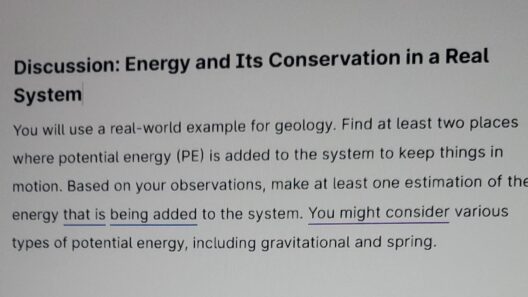The concept of energy conservation is a cornerstone of classical physics, akin to a sturdy tree with deep roots, providing stability and predictability in our understanding of the natural world. However, as one delves into the realm of quantum mechanics, this steadfast notion begins to tremble, revealing an enigmatic landscape where familiar principles may not always hold. The question arises: is conservation of energy indeed violated in the whimsical domain of quantum mechanics?
To embark on this exploration, it is vital to first articulate the principle of conservation of energy. This principle posits that within an isolated system, the total energy remains constant; it can neither be created nor destroyed but merely transforms from one form to another. In classical physics, these transformations are easily observable and quantifiable. Consider a pendulum, oscillating back and forth: at the apex of its swing, kinetic energy is momentarily at its nadir while potential energy burgeons, only to trade places as the pendulum descends. This harmonious dance encapsulates the essence of energy conservation in classical mechanics.
However, upon entering the quantum realm, one encounters phenomena that elude classical intuition. Quantum mechanics operates on principles that are often counterintuitive, akin to a magician’s sleight of hand. Here, particles exist in superpositions, exhibiting characteristics of both waves and particles. This duality poses challenges to conventional notions, compelling us to rethink and reimagine the underlying premises of physics. In this context, the assertion of energy conservation becomes more nebulous.
A fascinating instance that stirs the debate on energy conservation is found in the concept of virtual particles. Born from the uncertainties of the quantum vacuum, these ephemeral entities appear and vanish within minuscule time frames, seemingly defying classical definitions of energy. As an analogy, consider the concept of shadows: they may appear to dance and flit about, yet they remain tethered to the light source; they exist in a liminal space that bends our perception of reality. Similarly, virtual particles engage in a temporary existence, subtly complicating the discourse on energy conservation.
In examining whether energy conservation is ‘violated’ in quantum mechanics, it is crucial to refer to the Heisenberg Uncertainty Principle, which asserts that one cannot simultaneously know the exact position and momentum of a particle. This principle introduces an intrinsic uncertainty to quantum systems, engendering what some physicists perceive as fluctuations in energy. Within this framework, energy may indeed seem to oscillate in ways that are incongruous to our classical sensibilities. Yet, these fluctuations are not evidence of energy being created or destroyed; they are rather reflections of the probabilistic nature of quantum systems, where energy appears in various guises, momentarily eluding capture.
Moreover, the interpretation of quantum mechanics plays a pivotal role in the energy conservation debate. Different interpretations yield divergent perspectives on how we define and understand reality at the quantum level. The Copenhagen interpretation, for instance, suggests that physical systems do not have definite properties until measured, leading to questions about the very essence of energy in such a scenario. It’s as if we are attempting to grasp water in our hands; the tighter we squeeze, the more it slips away, illustrating the elusiveness of the quantum state. Other interpretations, including the many-worlds interpretation, offer alternative viewpoints but do not necessarily resolve the confusion surrounding energy conservation. Each interpretation casts a distinct lens through which to view the peculiarities of quantum phenomena.
Furthermore, advancements in quantum field theory have illuminated pathways to reconcile the conservation of energy with quantum mechanics. Quantum field theory proposes a framework where energy conservation can coexist with the principles governing quantum entities. It posits that all particles are excitations in underlying fields, supplying a more cohesive picture of energy propagation even amidst quantum fluctuations. In this sense, the conservation of energy becomes an insightful layer on a complex tapestry woven from the threads of quantum principles.
The unique appeal of quantum mechanics lies precisely in these complexities—its ability to challenge, intrigue, and redefine our comprehension of foundational concepts. While the dialogue around energy conservation within quantum mechanics continues, it is vital to recognize that the apparent paradoxes serve as catalysts for deeper inquiry. They invite us not only to question established paradigms but also to appreciate the intricacies of nature that lie beyond human perception.
In acknowledging the nuances of quantum mechanics, it becomes evident that energy conservation is not outright violated. Rather, it invites a sophisticated re-examination of how we understand energy within the quantum framework. The chasm between classical and quantum physics is akin to crossing a wild river: the surface may seem turbulent and chaotic, yet beneath it lies a current that remains a testament to the fundamental laws governing the universe.
Thus, as one navigates the landscape of quantum mechanics, the conservation of energy showcases itself not as a rigid edifice, but rather as a dynamic principle that adapts and evolves in the face of new revelations. Just as a butterfly emerges from its chrysalis, so too does our understanding of energy transform, prompting us to reshape our perceptions and embrace the enigmatic ballet of particles that constitute the fabric of reality. In the final analysis, is conservation of energy violated in quantum mechanics? The answer is not a simple ‘yes’ or ‘no’; instead, it invites a rich dialogue steeped in curiosity and wonder, encouraging us to look deeper into the heart of nature’s mysteries.






